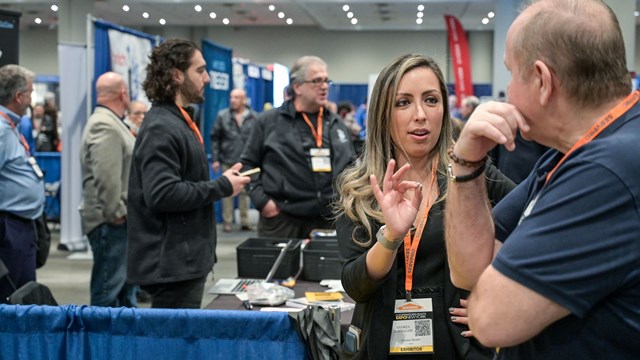
Of the many thousands of dollars a large condominium, co-op, or homeowners association may spend each year on insurance, two policies that typically cost less than five percent of the total are two of the most vital: crime insurance (often called fidelity coverage) and directors and officers liability insurance (often called simply D&O).
Crime insurance “protects an association against theft or misappropriation of its funds by people trusted to handle them,” explains Paul Mack, president of Mack, Mack & Waltz Insurance Group, Inc. in Deerfield Beach, and D&O insurance protects board and committee members against errors and omissions while fulfilling their duties.
Basically, “It’s 'oops' insurance for the volunteer board and committees, and the association itself,” says Barry Scarr, president and principal agent of Scarr Insurance Group with offices in Sarasota, Seminole and Ft. Lauderdale. “Crime and D&O insurance are separate policies—and an association really needs both.”
How Crime Insurance Works
Florida law (see sidebar) requires condominiums to purchase crime or fidelity insurance or a fidelity bond (a contract between the bonding company, the association, and responsible officials to guarantee the officials’ honesty). The 2013 Florida Legislature passed a similar requirement for HOAs, which at this writing awaited the governor’s signature.
Even without a legislative mandate, a community association’s governing documents usually require crime insurance. If they don’t, a wise board will buy it anyway. “Crime insurance generally costs between $200 and $2,000 a year, depending on the limit purchased,” says Evan Glassman, an agent with Advanced Insurance Underwriters, LLC in Hollywood.
The number of people covered by the policy also figures into the pricing, Mack says, “But it is most weighted on the amount you’re buying.” Scarr recommends as a rule of thumb covering three months of operating income, plus the reserves—“and round up.”
In a large association, the amount of money at risk can be substantial. When Lourdes Rodriguez was the property manager at the 168-unit Atlantic II at the Point Condominium Association in Aventura, she arranged for the company that processed the association's payroll to issue unauthorized payments to her. She also opened credit card accounts in the association’s name, charged personal expenses, and paid bills with association funds. In all, she stole close to a half-million dollars from the association.
After her manipulations were discovered, Rodriguez pleaded guilty to one count of first-degree grand theft and in May of 2012 received a 21-month prison sentence. The judge also ordered her to reimburse the insurance companies that covered most of the association’s losses, and the association itself.
This type of situation is uncommon but it's certainly not unique. Glassman cites an instance of “board members in cahoots who created a fake landscaping company, issuing invoices that the association was paying. For the crime policy to cover the loss, the association had to file a police report, so it became a criminal matter.”
Mack says many associations focus only on employee dishonesty and forget about other exposures. Under some circumstances, misbehavior by outside parties also may be covered. Mack tells of a property manager’s teenaged daughter who used her computer to hack into the association’s bank account and make unauthorized transfers totaling $50,000 to her own account. “The bank didn’t take responsibility,” he says. “They said the breach occurred on the association’s end. If an association board doesn’t buy forgery, alteration, and computer-fraud coverage, they won’t be covered,” he cautions. “I don’t even give them an option. I just put it in there.”
Good Intentions, Bad Aftermath
“D&O insurance covers the association, its board of directors, and volunteers against liability for lawful actions that they take, or decisions that they make on behalf of the association,” Glassman says. No law requires any kind of association to buy D&O coverage, although the governing documents typically mandate it.
Many D&O claims arise when an aggrieved unit owner sues the board over a special assessment, improper enforcement of a rule, or trying to enforce the rules after having let a violation linger. Other claims arise over discrimination issues, which may involve race or disability; employment liability issues such as sexual harassment or wrongful termination; and breach of contract. “A board has a contract with the landscaper and gets so ticked off that they fire him. Then he sues for breach of contract,” Scarr says.
Mack recounts the case of an HOA that prohibited homeowners with lake frontage from building a fence. “This house was on the corner, just barely touching the lake. A prospective buyer asked, ‘If I buy this house, will you let me build a fence?’ The board said no, so the buyer walked. The homeowner sued. The insurer settled that and paid a claim.”
Other Than Money
“D&O isn’t always about money issues,” Scarr says. “It’s about taking an improper vote, libel, slander. 'You called me an SOB at an annual meeting in front of all the owners,' or
You wrote something incorrect in the newsletter.' It never covers intentional acts.”
D&O isn’t meant to be a replacement for something else an association should have purchased, Mack says. For example, all D&O policies have an exclusion for failure to buy insurance. If an association obtains a Letter of Map Amendment from the Federal Emergency Management Agency to remove itself from a flood zone, it can cancel its flood insurance because lenders no longer require such coverage. “However,” Mack warns, “if there’s a flood, and you have to assess your unit owners, and they sue you, you’re not covered.”
Keeping D&O Costs Low
D&O coverage is based on the policy limits and the number of units in the association. It typically costs between $600 and $3,000 a year,” Glassman says. Mack won’t write coverage for less than $1 million. In a high-end association the coverage may be as much as $25 million.
“Other than reducing the limit, the number one way to save is not having claims,” Mack says. “The application has a series of questions, but associations do most of those things. The application asks if the association plans a special assessment, or is getting ready for a big project. Associations have more exposure with a huge renovation job. You’re spending all that money and you’re assessing the unit owners. Usually you go to a board meeting and nobody else is there, but if you’re reaching into the unit owners’ pockets, they come out of the woodwork.”
With a bad claims experience, Scarr says, “the premium could go to $5,000, and the standard $2,500 deductible could move north to $10,000. The association pays the deductibles. The board members are not personally liable and are indemnified. Otherwise nobody would serve.”
Glassman advises that an association incurring claims should institute policies and procedures to avoid a recurrence. “Make sure you’re running the association the way you’re supposed to be running it. The only clients I’ve ever seen looking to save money on D&O are the ones that had claims and their premiums are higher than they should be,” he says.
“One high-rise building had a problematic manager who was not following good guidelines and improperly fired a couple of employees. They sued for wrongful termination. The association got rid of the manager and instituted new guidelines for the termination process.”
Glassman recommends that an association not try to shop around in an effort to save a few dollars, only to have the savings achieve a negative effect. “D&O coverage is a manuscript form,” he explains. “Each policy is different, and each word can affect whether something is covered.” “The best way to see what a D&O policy covers is to see what it doesn’t cover,” Scarr adds. “If it’s not excluded, it’s covered—so get a broad-form policy.”
If your board does want to look into various options, you won't have too far to go; four carriers—CNA Financial Corporation, Great American Insurance Group, The Travelers Indemnity Company, and United States Liability Insurance Group—write 90 percent of the D&O policies in the United States. “Choose a good agent who specializes in community association insurance, and rely on your agent to find a good policy,” Scarr advises.
What Happens Without D&O
“I wouldn’t sit on a board for 10 minutes without D&O insurance,” Scarr declares. “If a unit owner files suit and every board member is named, the D&O carrier has a duty to defend. It could cost hundreds of thousands of dollars in attorney fees, so the big thing you’re buying is defense.”
If the wrongful act alleged in a lawsuit is covered, the D&O carrier will appoint an attorney and pay that attorney's bill, generally within 30 days of the filing. “The carrier has the ability and right to pay off the person who is suing, and they frequently do that,” Glassman says. “If they decide that the suit has merit, it might cost $30,000 to fight it, but they can make it go away for $10,000. It’s a business decision.”
Without D&O coverage, the individual board and committee members and the association are personally liable, although the governing documents usually indemnify the individuals. That means the association ends up paying legal fees and damages, which in turn means every unit owner shares in the expense—possibly to the extent of a special assessment.
“One of the biggest problems when we have a legitimate policy in place is delay in reporting a claim,” Scarr says. “Prompt reporting can prevent a small claim from exploding and being denied by the carrier.”
In one instance, an HOA decided not to claim on its policy and hurt its record, so the case went to court. That took a year and resulted in damages and legal fees exceeding $500,000. Then the HOA reported the claim and the D&O carrier refused to pay it due to the delay. “If the carrier had been put on notice early, it would have been over and done for $2,000,” Scarr says.
Operating a fair, open, and judicious board is the first line of defense against any lawsuit—and a good D&O policy and fidelity coverage can help provide the protection your community needs.
George Leposky is a freelance writer and a frequent contributor to The South Florida Cooperator.




Leave a Comment